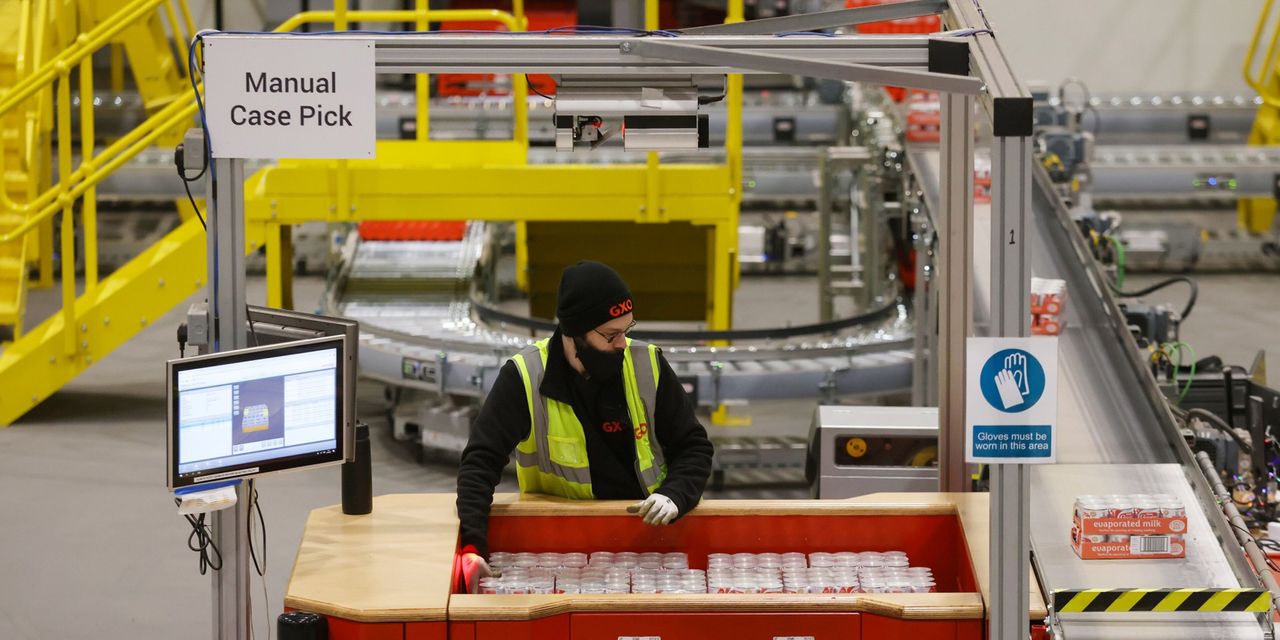ESG investing is jumping on the artificial-intelligence bandwagon.
Investors were already in a feeding frenzy over AI stocks when
Nvidia
(ticker: NVDA) stunned the market last month with its stronger-than-expected forecast last month. They still can’t get enough.
The latest twist is AI through the lens of environmental, social, and governance, or ESG, investing. In a recent report, Morgan Stanley (MS) said AI is a powerful tool that can help achieve a number of sustainability objectives that can, in turn, improve financial performance.
The firm acknowledged there are numerous AI-related ESG risks, including job losses and data privacy and security concerns, but said there are also many benefits. Those range from mitigating the effects of climate change and building resilience into the power grid to improving agricultural production and water conservation and increasing access to quality healthcare and better drug development processes.
AI can also help verify carbon emissions and improve corporate disclosure as it relates to ESG factors, the firm said. Earlier this year, the World Economic Forum said AI could be “a game changer” for managing ESG efforts and addressing climate change. “AI can help move the needle in the right direction by providing comprehensive ESG management solutions, reporting capabilities, and actionable emissions insights for even the biggest enterprise,” it said.
But with the obvious bets so well known that seemingly everyone owns them, where should an ESG investor start?
Morgan Stanley recommended a three-pronged approach to finding companies that can provide AI-driven ESG benefits—look for firms that use AI to reduce harm to the environment; enhance people’s lives; and help drive advances in technology.
One of the top AI-related ESG benefits, according to Morgan Stanley, is shoring up the U.S. electric grid.
The U.S. is increasingly dependent on electricity, whether for heating homes or powering millions of electric vehicles, and utilities are moving away from fossil fuels to renewable energy sources such as wind and solar. But most of the nation’s electric grid was built in the 1960s and 1970s and the aging system is vulnerable to extreme weather events.
Morgan Stanley said that with the increasing use of renewable energy and more extreme weather events that are stressing the stability of the grid, there is a clear need for AI capabilities that optimize energy storage, predict the output from intermittent renewable resources, develop sophisticated microgrids, and maintain the health of power transformers through predictive analytics.
One example of a company to play this theme is backup battery storage solution provider Stem (STEM). The company recently reported better-than-expected first-quarter sales, but the stock is having a tough year, down 38%. Another company is
Fluence Energy
(FLNC), up more than 41% this year and 137% over the past 12 months. The stock surged last month after BofA Securities turned neutral on the energy-storage-products and -services company, saying near-term opportunities now balance out longer-term risks.
Creating AI applications requires a lot of electricity. Morgan Stanley said while the energy needed to power the AI proliferation is widely debated, companies in clean energy, such as hydrogen fuel-cell technology company
Bloom Energy
(BE), “play a key role in providing power to data centers when grids are unable [to].”
The California company builds machines using fuel cells that can run on several kinds of gases, from natural gas to hydrogen to biogas pulled from landfills or dairy farms. Biogas, such as hydrogen, gets large subsidies in the 2022 U.S. climate bill known as the Inflation Reduction Act. Bloom Energy’s shares are down 27% this year.
When it comes to drug development, Morgan Stanley cited
Recursion Pharmaceuticals
(RXRX) as an example. The company uses massive data computational tools, lab robotics, and a petabyte-level database to speed up the drug-discovery process. The stock is up about 14% this year and 35% over the past year.
AI is also helping improve supply chains which, in turn, increases energy efficiency in manufacturing.
GXO Logistics
(GXO) was spun off from shipping and trucking services provider
XPO Logistics
(XPO) in 2021, creating a pure-play contract logistics provider. Its shares are up 35% this year.
On the data analytics front, Morgan Stanley said companies such as data-warehouse software provider
Teradata
(TDC) “have been playing an intriguing part in providing tools to their customers to track and monitor ESG metrics.” A large tech company, for example, is working with Teradata to create an integrated data model to help report and reduce emissions. Its shares are up nearly 40% this year and have gained 20% over the past year.
Write to Lauren Foster at [email protected]
Read the full article here













